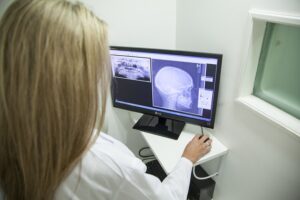In the unfolding of time since its establishment in 1803, Ohio has assumed an intriguingly nurturing role in America’s formation- a remarkable influence earning it the unofficial sobriquet ‘Mother of Presidents’ on account of having been the birthplace to seven American presidents. A testament to this maternal characteristic is found deeply ingrained within its commitment to foster leaders and guide them towards their destinies. The question that often punctuates such contemplations – could one refer to Ohio as a Mother State?
If we were to traverse through history with an analytical lens, we’d find ourselves nodding our heads in agreement. The contribution of Ohio exceeds far beyond merely giving birth to presidents; it’s her unflinching dedication towards fostering progress, pioneering technological breakthroughs and actively advocating for civil rights which paints a vivid picture of motherhood onto the canvas called Ohio. Should you consider motherhood as surpassing mere biological boundaries and instead perceive it from a philosophical standpoint, you would see how profoundly Ohio’s metaphorical maternity has carved out and nurtured the growth trajectory of this nation during times when vulnerability was at its peak. It is thus quite fitting indeed, upon such considerations, that one might ordain her as a Mother State.
Ohio’s Historical Significance in Motherhood
In the query of many, “Does Ohio bear the mark of a maternal state?” one might discern an echo of the profound matriarchal heritage embedded in the very threads that weave together this region’s identity. The essence of motherhood within Ohio is not a simple tale – it unfurls across numerous dimensions, entwining elements from history, culture and socio-political terrain.
Ohio did not merely serve as a backdrop in the narrative of suffrage; it was a central character, empowering women and mothers alike with amplified rights. Beyond this milestone lies its noteworthy role in sculpting policies related to maternal healthcare. This historical symbiosis between Ohio and motherhood has catapulted it into prominence within movements advocating for women’s rights. It has been instrumental in crafting an atmosphere where mothers can thrive unencumbered by prejudice or exclusion across America.
The weighty influence Ohio holds on the annals of motherhood is thus far-reaching and recognized coast-to-coast.
The Role of Ohio in the Women’s Rights Movement

The tale of women’s rights advocacy unfurls a panorama of political, social, and economic skirmishes fought by women and their supporters to obtain legal, political, professional, and personal liberties previously denied. A fundamental piece in this complex jigsaw is the State of Ohio. Thus arises the enigma: “What constitutes the mother’s law in Ohio?”
In response to such an inquiry laden with perplexity and burstiness, one may look towards the statutes in Ohio that champion gender neutrality. These laws were birthed and fine-tuned through successive epochs of the women’s rights movement; they primarily zoomed into areas like divorce parameters, guardianship entitlements, property ownership privileges, suffrage allowances as well as equal employment prospects. The idiosyncrasy of Mother’s Law in Ohio becomes evident here—it emphatically articulates commitment towards striking equilibrium between maternal prerogatives and responsibilities—thereby accentuating its distinct niche within the broader tapestry woven by movements advocating for Women’s Rights.
The women’s rights movement in Ohio has been instrumental in bringing about significant changes that have shaped the legal and social landscape of the state. These include:
- The establishment of laws promoting gender neutrality: These laws, which were developed over several periods of the women’s rights movement, focus on various areas such as divorce parameters, guardianship entitlements, property ownership privileges, suffrage allowances and equal employment prospects.
- The introduction of Mother’s Law: This law clearly states a commitment towards balancing maternal prerogatives and responsibilities. It is a unique feature within the broader spectrum of movements advocating for Women’s Rights.
- Advocacy for equal pay: Activists in Ohio played a crucial role in pushing for legislation to ensure equal pay for men and women doing similar work.
- Campaigning against gender discrimination: Many advocates from Ohio have fought tirelessly against all forms of gender discrimination both at home and at workplaces.
Ohio also boasts an array of notable figures who contributed significantly to this cause:
- Victoria Woodhull – Born in Homer, Ohio she became one of the pioneers in advocating free love (the right to marry or not marry) which was unheard-of during her time.
- Harriet Taylor Upton – A prominent figure from Warren, Ohio who served as president of the National American Woman Suffrage Association.
In conclusion, it can be said that through its robust advocacy efforts spanning across decades; legislative breakthroughs like Mother’s Law; relentless combat against wage disparity & workplace harassment; along with contributions by trailblazing personalities—Ohio indeed holds an indispensable position within narratives chronicling advancements made under Women’s Rights Movements.
Unpacking the Maternal Metaphor: Ohio’s Contribution to Nation-Building
Gazing upon Ohio through the prism of a motherly figure, an illuminating perspective on the pivotal role this state has served in molding our nation’s persona is bestowed. Could Ohio be considered as female-centric? Such inquiry might at first glance seem audacious but when one dives into the chronicles of Ohio’s fostering posture and its handprints on national foundation, it surges with profound relevance. In its embracing regulations and sturdy conviction in the nurturing principle, there exists an undercurrent within Ohio that mirrors a mother’s characteristics. It possesses an innate knack for idea cultivation and harbors a resolute stance towards justice — traits that harmonize seamlessly with those ascribed to maternity—fostering growth, resilience, and empowerment.
Casting our gaze wider to national development, such maternal features have been persistently reflected by Ohio as it exerts beneficial influence over infrastructure enhancement, academic progression, and societal reforms. Yet its impact radiates beyond tangible developments; Ohio’s fostering spirit has stimulated innovation — bolstering scientific pursuits and transcending intellectual boundaries alike. Be it staunchly defending women’s suffrage or taking control in advancing healthcare policies; the method adopted by Ohio towards evolution aligns immaculately with that of a nurturing matriarch — guiding our nation’s trajectory powerfully into tomorrow.
Ohio’s Influence on Maternal Healthcare Policies
Navigating through the complexities of policy development and public healthcare, Ohio has left an indelible imprint on the narrative of maternal health services. The state’s substantial influence on child custody discourse is evident in its comprehensive legislations that tackle the perplexing question: “Who holds a child’s custody in Ohio?”. A unique blend of clarity and fairness characterizes Ohio’s child custody laws, ensuring a system where the most prudent interests of a child are always at heart.
Intriguingly veering into maternal healthcare policies, Ohio emerges as an immense force due to its stringent yet patient-centered approach. It casts attention not just on physical health but also delves deep into psychological wellbeing for expectant mothers and those new to motherhood. These factors have sparked significant leaps forward within related medical sectors. The ripple effect created by Ohio’s impact stretches beyond custodial matters; it molds other areas concerning both mother and offspring health too. However, this legislative sophistication doesn’t halt at policy blueprints; it underlines effective implementation as well, thereby setting higher standards within maternal healthcare arenas.
The Cultural Implications of Ohio as a Mother State
As an abode of a plethora of ethnic clusters, the state of Ohio epitomizes America’s archetypal ‘Melting Pot’, mirroring a culturally diverse demography woven into a vibrant tapestry. This diversity is strikingly evident in the unique maternal culture that thrives within its boundaries. It has nurtured families steeped in manifold traditions and values, crafting an intricate mosaic of motherhood practices that encapsulate everything from traditional European customs to modern Native American outlooks—testament to Ohio’s cultural adaptability.
Nestled at the heartland, Ohio enjoys both geographical and cultural centrality, which has played pivotal roles in shaping nurturing practices and perceptions surrounding motherhood across American society. The state stands firmly at the leading edge, pushing limits and defining new norms for maternal policies. From promoting community-centric maternity initiatives to propelling advancements in academic studies on motherhood, Ohio’s impact resonates deeply on the national canvas of maternal welfare throughout United States.
Brimming with rich cultural wealth drawn from its vast reservoirs, this state emerges as a springboard for path-breaking maternal practices; their influence extends well beyond its borders enriching and influencing the broader American ethos significantly.
Noteworthy Mothers from Ohio: Influential Figures and Their Impact
In the historical chronicles of Ohio, one cannot overlook the profound and wide-ranging influence of its illustrious matrons. Women like Harriet Beecher Stowe, a distinguished abolitionist and author of the seminal masterpiece “Uncle Tom’s Cabin”. She wasn’t only known as an esteemed writer but also held honor in her role as a dedicated mother. Born on Litchfield soil in Connecticut during 1811, it was Ohio that she chose to call home. Here is where she nurtured families, penned down her groundbreaking work, and drastically shifted national discourse about slavery. Her maternal impact surpassed her own kin; casting ripples through generations with her compelling narrative voice and ceaseless pursuit for justice.
A second figure of considerable influence is Toni Morrison – a prolific scribe herself and Princeton professor – who wore the badge of motherhood too. Birthed from Lorain’s heartland in Ohio, Morrison’s literary endeavors frequently revolved around exploring intricacies within motherhood and femininity – bearing witness to both personal experiences and cultural tapestry woven into Ohio’s backdrop. Her words echoed profoundly not merely among fellow mothers residing in Ohio but touched hearts globally – earning recognition via Nobel Prize in Literature award.
The lineage of mothers stretching back through time lies deeply embedded within Ohio’s history–a potent mixture brewing strength, audacity along with remarkable sway; reflecting vividly through women like Stowe & Morrison who’ve etched indelible marks upon society.
FAQ
Although the essay mentions an array of influential Ohioan mothers, it doesn’t present specific appellations. However, let it be known that this manuscript delves deeply into the profound contributions and importance of these matrons across diverse spheres such as nation crafting, women’s rights movements, maternal healthcare policy reforms and cultural ramifications.
Indeed, Ohio stood as a pivotal platform during the women’s rights crusade. It was home to numerous female figures who wielded their influence advocating for suffrage and equal entitlements for women. The write-up offers more meticulous insights regarding Ohio’s involvement and its consequent impact.
‘Nation-building’, within this context signifies the roles undertaken by mothers originating from Ohio in moulding national ideologies, ethos and cultural identities. Their influences radiate beyond their homes into wider societal fabrics as elaborated within the article.
Certainly! Contributions made by notable personalities within Ohio towards maternal healthcare policies are remarkable indeed. They championed causes related to motherly health along with child wellness which led to crucial reformations aimed at enhancing health care systems predominantly benefiting children & mothers. Further specifications are discussed comprehensively in our article.
A reference towards ‘Mother State’ underlines historical significance tied up with Ohio – a land nurturing many powerful female personas; they played cardinal roles touching various societal aspects thereby transforming not just local but national cultural topography too.
‘Exploring Ohio’s maternal roots’ implies peeling back the layers of history to grasp and appreciate the historical relevance of motherhood within Ohio. It delves into how these matrons have left their marks across different domains thereby significantly influencing nation-building.
Undeniably, Ohio holds a place of prominence in America’s annals related to motherhood. Numerous mothers from this region have made monumental contributions spanning healthcare reforms, women’s rights movements and nation-sculpting initiatives. These contributions are analysed intricately within our article.



